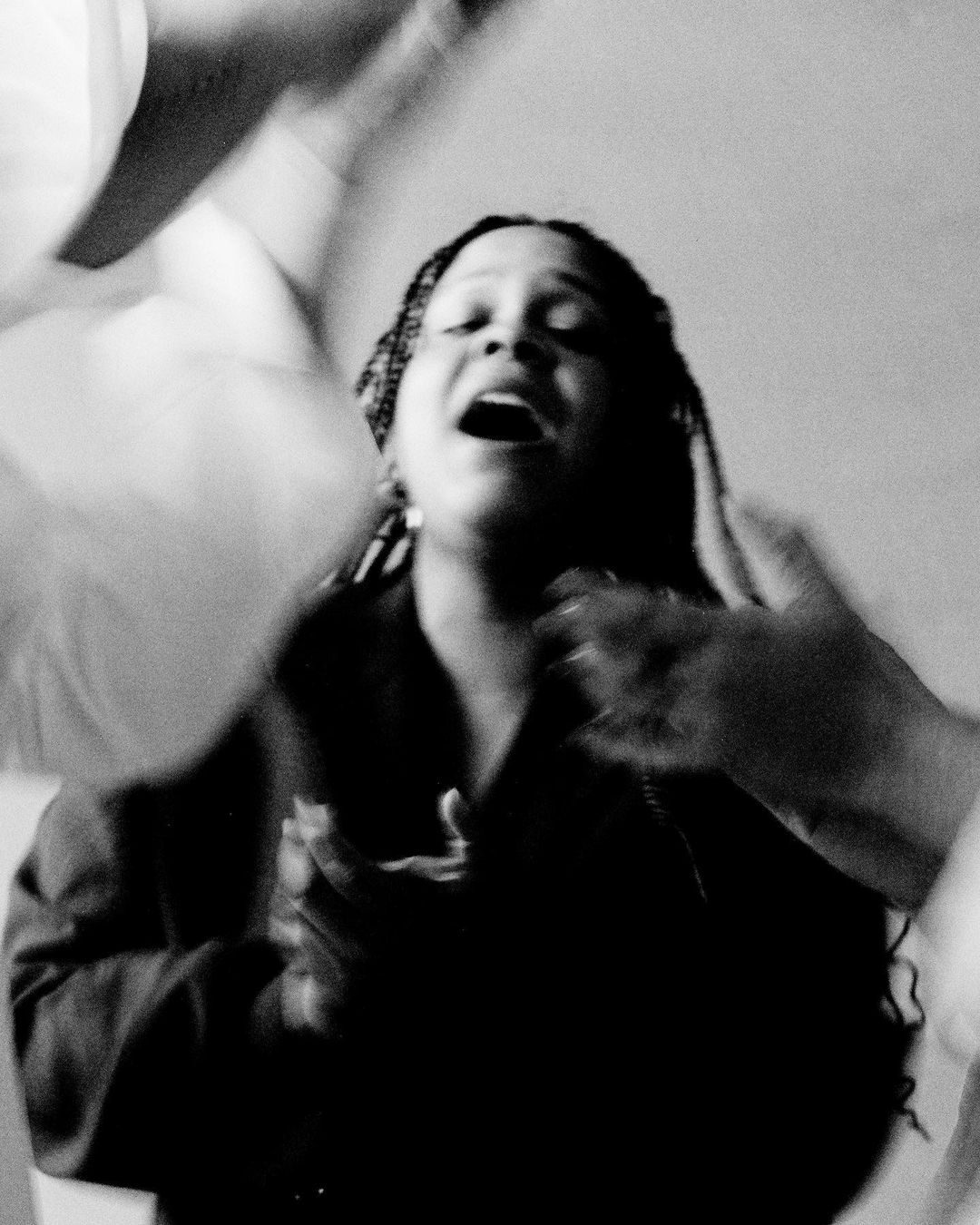Art and Public Policy Professor Luis Rincón Alba's exhibition in collaboration with Camila Falquez "The Voice Does Go Up" and performance series "Chant Down" is on view at Hannah Traore Gallery.
To read more about the exhibition please read below:
"Hannah Traore Gallery is pleased to present The Voice Does Go Up, an exhibition by Camila Falquez and Luis Rincón Alba. The Voice Does Go Up is a multimedia installation and performance site that explores the various dimensions and potentials of the human voice. Activated through video, audio recording, and live performance, these scenarios feature collective assemblages of sound where the voice emerges through its gestural and material qualities. Emphasizing the role of the voice in music, the installation delves into and accentuates the most captivating and enchanting traits of sound. The exhibition’s title originates in a quote from the Saint Lucian poet and playwright Derek Walcott. In an interview with Edward Hirsch for The Paris Review in 1986 entitled “The Art of Poetry,” Walcott compared the task of the poet to that of the calypso singer, explaining “The voice does go up in a poem. It is an address, even if it is to oneself.”
The exhibition space is a monochromatic red environment featuring two tall panels onto which videos are embedded. The panels surround a performance device: a sparse plywood and canvas cube where the sound piece is played—a grounding structure within which the voice is amplified. Throughout the installation, captivating visual reflections emerge, offering insights into the physical conditions necessary for the voice to ascend. In addition to sound and video, Falquez and Rincón Alba will offer a series of specially designed performances within the installation space; these performances aim to further highlight the power and expressive range of the voice.
There are two types of videos in the exhibition, each offering unique perspectives. The first type comprises videos captured during fieldwork in Cuba and New Orleans, documenting vibrant religious and carnival celebrations where the charismatic power of the singing voice leads intimate gatherings. These videos provide viewers with the privilege of witnessing the bodily mastery required to channel specific vocal techniques that are believed to summon mystical forces. In contrast, the second type features studio-recorded video. Set within a controlled environment, these videos examine the intricate process behind producing such ascending voices. Singers and musicians hailing from the Caribbean diaspora and currently residing in New York, demonstrate how the body contorts, twists, and reshapes itself to achieve vocal strength. The central video features Colombian-born singer Carolina Oliveros.
The sound piece in the performance site offers a deeper reflection on the transcendent aspects of the voice, overcoming the ordinary relationship we have with our voices and exploring its transformative potential in individual and communal experience. As Rincón Alba expresses in the recording, “More than attention, we are invoking here a fleshly attunement of sorts. This attunement also requires us to put ourselves in the path of these dancing words with all our flesh, not just our body. That we allow ourselves to be moved by the words themselves, which is a way of always saying the words and the voice; the voice and the words; the words in the voice; the voice in the words; the voice of the word.”
The inaugural performance of the exhibition, debuting in September, will be Chant Down, featuring Oliveros as the lead voice. The piece investigates the forces and rebellious energies that inhabit traditional Caribbean songs, exploring the anticolonial legacies that gave shape to ancestral percussive and chanting techniques and the modes these legacies are reactivated through. Awakened by collective chanting, the performance seeks to access the vibrational registers—sometimes secret and hidden—in which the history of Black and Indigenous struggle found refuge.Through this assembly of video, sound, and performance, the exhibition transports visitors into a realm where music, spirituality, and the human body converge—illuminating the profound connection between physicality and vocal expression."
https://hannahtraoregallery.com/exhibition/camila-falquez-and-luis-rincon-alba-the-voice-does-go-up/
